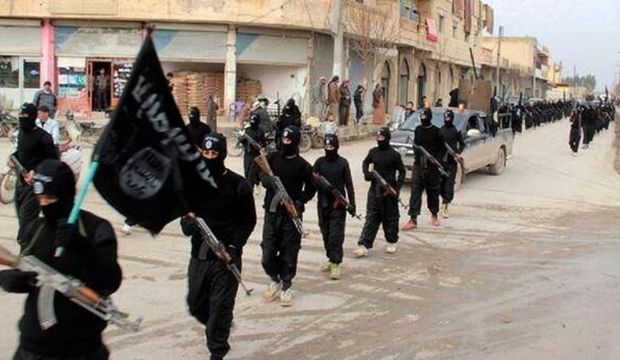If we look at the classification of fizzy drinks, those that claim to be “lite” contain less sugar. But is it possible to also apply this to the classification of terrorist and extremist groups? Could there possibly be “lite” terrorist groups in addition to the original full-fat variety? And would this require a different approach when dealing with such terrorist groups, or should they all be dealt with in the same manner?
This is the question that poses itself today, given the variety of such groups present on the scene and the various types of extremist groups that are taking advantage of the turmoil in the region to grow and expand, becoming a global problem. The Middle East is turning into a region overrun with these kinds of groups, while the world watches on with growing horror, pity and occasionally acceptance that the region is fated to such bombings, sectarian wars and violence.
With this wave of violence and terrorism, we sometimes hear comparisons being made between the different varieties of extremism and the subsequent acts of violence and terrorism that they produce. Syria is a good example of this, particularly with regard to the conflict between the Islamic State of Iraq and Syria (ISIS) and the Al-Nusra Front. These two groups are confronting one another today despite their sharing the same ideological root, namely Al-Qaeda. The same applies to the so-called Ansar Al-Shari’a groups that have established themselves in various Arab states—they are fighting different battles but are ultimately practicing the same methods in pursuit of their objectives.
Such comparisons are nothing new; there are many historical examples of this phenomenon. The same thing happened between the Al-Gama’a Al-Islamiyya and Islamic Jihad in Egypt during the wave of violence that struck the country in the 1980s and 1990s. There were also many other groups that followed the same course and ideology as these two groups, namely the use of violence to forcibly change society. This also happened in Afghanistan with comparisons being made between the Taliban and Al-Qaeda—there was an alliance between these two movements until Al-Qaeda was defeated, its leadership having been killed or scattered.
In the past, there was no land or territory controlled or ruled over by terrorism. Even when Al-Qaeda enjoyed freedom of movement in Afghanistan and had camps and bases there, it was under the protection of the Taliban, which was physically in control of the territory and ruled the land. While in the Sahara regions of the Maghreb countries, where Al-Qaeda was also present, the group was always in hiding, whether in the deserts or mountains; they were able to wage their operations but did not actually have the capability to control the ground.
Today, the situation has changed. For the first time, there is a terrorist group that has inexplicably been able to secure a presence on the ground, from Iraq to Syria. This group is in control of major cities, such as Mosul, while its fighters have managed to gain control of weapons and air bases from the retreating military. I am, of course, talking about ISIS, or the so-called Islamic State. However, at the same time, there are also extremist Shi’ite groups present on the ground, which are carrying out similar acts of violence, murder and terrorism.
And a similar situation is unfolding in Libya. Extremist militias or organizations, under a variety of different guises, are in control of whole regions and air bases, including Tripoli’s main airport. What is even more strange is that these militias threatening state institutes receive their salaries from the State Treasury!
However, the manner in which these extremist groups grow and develop, as well as the alliances they make, confirm that terrorism is all one, and there is no terrorism-lite. Even if the names of terrorist groups or their methods differ, terrorism is one and the same.
The war for Libya is being fought by militias that are variously allied to the Libyan Islamic Fighting Group—itself an ally of Al-Qaeda—and the Muslim Brotherhood. The Brotherhood is hoping to come out victorious in the end, and its project goes far beyond Libya’s borders, extending to neighboring countries.
As for Iraq and Syria, this all started when the entry of fighters who follow an extremist ideology was facilitated into Syria in order to hijack the uprising, transforming the issue from a national uprising into an international crisis revolving around terrorism. This is a crisis that involves the entire world; a crisis to which the entire world must therefore look for a solution.
There is a new generation of terrorists who are fiercer and far more violent than the generation of Al-Qaeda leader Ayman Al-Zawahiri, who is nearing retirement-age. Despite this, the new generation has drunk from the same ideology. However, this new generation of terrorists would never have emerged if all forms of extremist ideology had been seriously confronted, whether Sunni or Shi’ite. In addition to this, the culture of state institutions and state-building should have been strengthened, not the culture of militias, regardless of the justifications for this.
The result is that we are now under siege from a belt of terrorism that stretches dangerously across the region. The terrorists there are in control of land, resources and arms, and are threatening to embroil other states in this crisis. This can be seen in ISIS’s recent capture of Lebanese soldiers, inciting internal tensions in the country. Not to mention the daily scenes of horrific violence that are taking place, with those responsible boasting about it on social media in order to attract other sick minds.
The only solution to this dangerous state of affairs is serious coordination against all forms of terrorism and ideological extremism. If not, the people of the region will be the biggest losers.
